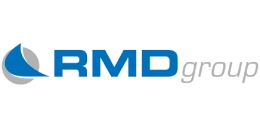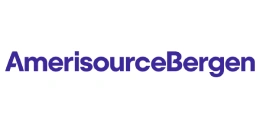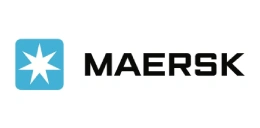Air Conditioner Cost Model: The Cooling Benchmark
_11zon.webp)
Air conditioners are electromechanical devices used to control indoor climate by extracting heat and humidity and ensuring optimum air circulation. Generally consisting of a compressor, condenser, evaporator, refrigerant fluid, filters, fans, and electronic controls, air conditioners work based on the principle of heat exchange, moving heat from indoor areas to the external environment. Contemporary units come in diverse configurations, such as split systems, window units, central air systems, and portable models, supporting respective residential, commercial, and industrial applications. Some of the major characteristics are efficiency in cooling, energy use, noise rating, and environmental footprint in relation to refrigerant type. The production of air conditioners consists of accurate assembly of components and incorporation of sophisticated controls for operational and durability purposes. Their uses are far beyond household and office comfort cooling, playing vital functions in healthcare units, data centers, manufacturing plants, and transportation systems. Benefits include better indoor air quality, productivity increases in workplaces, and protection of equipment in regulated environments. Sustainability drivers are increasingly influencing industry, with focus on energy-saving inverter technologies, intelligent IoT-capable systems, and lower-global-warming-potential refrigerants. The prospects of air conditioners are closely associated with world urbanization, adaptation to climate change, and innovation in sustainable cooling technologies. Air conditioners remain a central market, influenced by changing consumer needs, technological improvements, and tough sustainability requirements. The global air conditioner market size reached USD 124.6 Billion in 2024. According to IMARC Group, the market is projected to reach USD 206.4 Billion by 2033, at a projected CAGR of 5.2% during 2025-2033. The market for air conditioners is influenced by a number of lasting drivers. Urbanization, increasing disposable incomes, and better living standards continue to propel residential demand. Growing commercial infrastructure, including malls, office complexes, and hospitality facilities, fuels long-term consumption in the commercial market. Industrial demand is also strong, especially in manufacturing facilities, cleanrooms, and data centers where accurate climate control is essential. Government regulations for energy efficiency and environmental compliance are powerful market drivers, compelling manufacturers to adopt inverter-based systems and environmentally friendly refrigerants. Climate change and rising global temperatures are also exacerbating demand in tropical and temperate zones. Over the coming years, trends like integration of IoT-based smart controls, predictive maintenance through artificial intelligence, and uptake of solar-powered or hybrid systems are set to define the industry over the next five years. Competitive edge lies with solutions that achieve cost effectiveness alongside sustainable performance. Yet challenges persist, such as high energy use and reliance on environmentally problematic refrigerants. On the sustainability side, worldwide uptake of HFOs (hydrofluoroolefins) and natural refrigerants such as propane is picking up speed. The industry response has been anticipatory, and major OEMs have shifted portfolios toward low-carbon and energy-saving models, thus meeting global net-zero ambitions.
Trending Insights on Air Conditioner: Latest News and Developments
- In May 2025, Samsung Electronics announced that it has reached a deal with European investment firm Triton to purchase all of the shares of FläktGroup, a prominent worldwide supplier of HVAC systems, for €1.5 billion. Given the explosive expansion of the worldwide applied HVAC market, Samsung's commitment to growing and fortifying its HVAC business is further supported by the purchase.
- In March 2025, Google Cloud and Carrier Global Corporation (NYSE: CARR), a leader in intelligent climate and energy solutions worldwide, are collaborating to improve grid flexibility and facilitate more intelligent energy management. This initiative, spearheaded by Carrier Energy, the company's new energy solutions division, will combine Google Cloud's AI-powered analytics and WeatherNext AI models developed by Google DeepMind and Google Research with Carrier's battery-enabled HVAC technology, which is provided through its Home Energy Management System (HEMS) solutions.
- In December 2024, Rechi Precision Co., Ltd., a global leader in the compressor industry with its headquarters located in Taiwan, and Daikin Airconditioning India Pvt. Ltd., a wholly owned subsidiary of Daikin Industries, Ltd., decided to collaborate and create a joint venture in India to manufacture, design, and sell compressors to the Indian HVAC industry. Operations for the joint venture are anticipated to start by the end of FY2025, subject to the construction of a production facility and the acquisition of all required regulatory clearances.
Case Study on Cost Model of Air Conditioner Manufacturing Plant:
One of our clients reached out to us to conduct a feasibility study for setting up a medium scale air conditioner manufacturing plant. We developed a comprehensive financial model for the setup and operation of a proposed air conditioner manufacturing plant in India. This plant is designed to produce 55,000 units of air conditioner annually.
Manufacturing Process: The production process of air conditioners consists of several stages incorporating mechanical, electrical, and electronic elements to meet functional efficiency. Production starts with the preparation of raw materials such as sheet metals, plastics, copper tubes, aluminum fins, compressors, and refrigerants. Sheet metals are punched, pressed, and fabricated into casing structures, whereas copper tubes and aluminum fins are formed into heat exchangers through bending, expansion, and brazing operations. Compressors are precision-built and coupled with hermetic refrigerant circuits. Intermediate operations include welding, refrigerant charging, and the integration of electronic controls like thermostats, inverters, and printed circuit boards. Vacuum pumping and leak testing are performed on all units to guarantee system integrity. Efficiency is maintained through cleaning operations such as degreasing and coil washing. Quality control is strict, incorporating functional testing on cooling performance, energy efficiency, noise levels, and safety requirements. The latter stages consist of installation of insulation, component alignment, paint or powder coating of outside units, and construction of sub-systems into indoor and outdoor units. Air conditioners are subsequently packaged with protection materials against damage while in transit and shipped for domestic, business, or industrial applications.
_11zon.webp)
Raw Material Required:
The basic raw materials required for manufacturing air conditioners include metals, plastics, refrigerants, and electronic components. Key raw materials include:
- Galvanized Sheet Metal
- Structural Steel
- Compressor
- Condenser
- Evaporator
- Condenser Fan
- Fan Motor
- Refrigerant
- Sensors
- Display Unit
- PCB
- Capillary Tube
- Air Filter
- Capacitors and Contactors
- Relays and Wiring Harness
- Insulation Materials, Wires and Cables
- Others
Machineries Required:
- CNC Sheet Metal Shearing Machine
- CNC Press Brake (Bending Machine)
- Punching / Stamping Press
- Powder Coating Line / Painting Booth
- Injection Moulding Machine
- Fin Press Machine
- Tube Straightening & Cutting Machine
- Tube Expander / Expanding Machine)
- Hairpin Bender
- Return Bender
- Coil Forming Machine
- Brazing / Welding Machines (automatic & manual)
- Leak Testing Machine (Helium / Nitrogen)
- Compressor Shell Welding, Rotor Balancing, Oil Filling, Helium Testing Machines
- Refrigerant Circuit Assembly
- Brazing/Welding Stations
- Vacuum Pumping Stations,
- Refrigerant Charging Machines (R32, R410A, etc.)
- PCB Mounting & Testing Stations
- Wiring Harness Assembly Machines
- Motor Assembly & Testing Units)
- Conveyorized Assembly Line
- Screw Driving Systems (Auto/Manual)
- Riveting Machines
- Drilling and Soldering Machines
- Performance Test Chambers for temperature & humidity control
- Noise/Vibration Test Stations
- High Voltage / Insulation Testers
- Refrigerant Leak Detectors
- Packaging (Carton Box Making & Printing Machines, Thermoforming Machines (for foam packaging) and Wrapping Machines)
Techno-Commercial Parameter:
- Capital Investment (CapEx): Capital investment in an air conditioner manufacturing plant involves notable initial investments while setting up plants, procuring equipment, and developing infrastructure. The CapEx starts with land procurement and land development, such as civil works, factory structures, and connections of utilities like electricity and water supply. The high-cost machinery is the center of CapEx, such as coil-producing lines, sheet metal stamping and forming machines, brazing and welding units, vacuum pumps, refrigerant charging system, and assembly lines with automation. Tooling, jigs, and testing equipment for energy efficiency, durability, and noise measurement are also essential investments. Other expenses include material handling systems, HVAC and ventilation in the plant, and safety installations to industrial standards. IT systems, design software, and control systems also contribute to setup expenses. The layout design of the plant is also important, as it affects efficiency in production flow, energy consumption, and labor productivity. Investment in sustainability initiatives like renewable energy integration, effluent treatment systems, and recycling facilities for waste becomes a growing priority. Individually, these expenses build a solid foundation for scaling production and achieving international compliance standards.
- Operating Expenditure (OpEx): Operating expense in an air conditioner factory provides for repeating expenses necessary to maintain operations and remain profitable. The biggest cost factor is raw materials, specifically compressors, copper tubes, refrigerants, and electronic control units. Utility costs are high, considering the energy-consuming brazing, refrigerant charging, and testing operations. Labor salaries, training, and staff handling also form a significant portion of the recurring costs. Other costs include equipment maintenance, spare parts purchasing, and occasional calibration of testing tools. Packaging, storage, and transport costs form part of distribution costs, particularly for large air conditioners. Depreciation of machinery and plant, insurance, and compliance with regulations contribute to operating outflows each year. Marketing, support to the dealer network, and after-sales service centers are strategic spend that maintains market viability. With sustainability objectives as a priority, continued expense related to waste management, monitoring of energy consumption, and emission compliance also influences operational budget. Successful OpEx management, thus, entails harmonizing raw material purchasing strategies, energy-saving measures, and supply chain management to drive competitiveness in a price-sensitive market. Furthermore, raw material cost ranges between 55-65%, labor cost ranges between 15% to 20%, and all other costs ranges between 15-30% in the proposed plant.
- Profitability Analysis Year on Year Basis: We assisted our client in developing a detailed cost model, which projects steady growth, with revenue rising throughout the projected period. Moreover, gross profit margins lie between a range of 15-30%, and net profit lie between the range of 5-15% during the income projection years, highlighting strong financial viability and profitability.
Conclusion:
Our financial model for the air conditioner manufacturing plant was meticulously developed to meet the client’s objectives, providing an in-depth analysis of production costs, including raw materials, manufacturing, capital expenditure, and operational expenses. By addressing the specific requirements of producing 55,000 units of air conditioner annually, we successfully identified key cost drivers and projected profitability, considering market trends, inflation, and potential fluctuations in raw material prices. This comprehensive financial model equipped the client with valuable insights into strategic decision-making, demonstrating our commitment to delivering high-quality, client-focused solutions that ensure the long-term success of large-scale manufacturing ventures.
IMARC's Financial Model Expertise: Helping Our Clients Explore Industry Economics
IMARC is a global market research company that offers a wide range of services, including market entry and expansion, market entry and opportunity assessment, competitive intelligence and benchmarking, procurement research, pricing and cost research, regulatory approvals and licensing, factory setup, factory auditing, company incorporation, incubation services, recruitment services, and marketing and sales.
Under our factory setup services, we assist our clients in exploring the feasibility of their plants by providing comprehensive financial modeling. Additionally, we offer end-to-end consultation for setting up a plant in India or abroad. Our financial modeling includes an analysis of capital expenditure (CapEx) required to establish the manufacturing facility, covering costs such as land acquisition, building infrastructure, purchasing high-tech production equipment, and installation. Furthermore, the layout and design of the factory significantly influence operational efficiency, energy consumption, and labor productivity, all of which impact long-term operational expenditure (OpEx). So, every parameter is covered in the analysis.
At IMARC, we leverage our comprehensive market research expertise to support companies in every aspect of their business journey, from market entry and expansion to operational efficiency and innovation. By integrating our factory setup services with our deep knowledge of industry dynamics, we empower our clients to not only establish manufacturing facilities but also strategically position themselves in highly competitive markets. Our financial modeling and end-to-end consultation services ensure that clients can explore the feasibility of their plant setups while also gaining insights into competitors' strategies, technological advancements, and regulatory landscapes. This holistic approach enables our clients to make informed decisions, optimize their operations, and align with sustainable practices, ultimately driving long-term success and growth.
Our Clients
Contact Us
Have a question or need assistance?
Please complete the form with your inquiry or reach out to us at
Phone Number
+91-120-433-0800+1-201-971-6302
+44-753-714-6104










